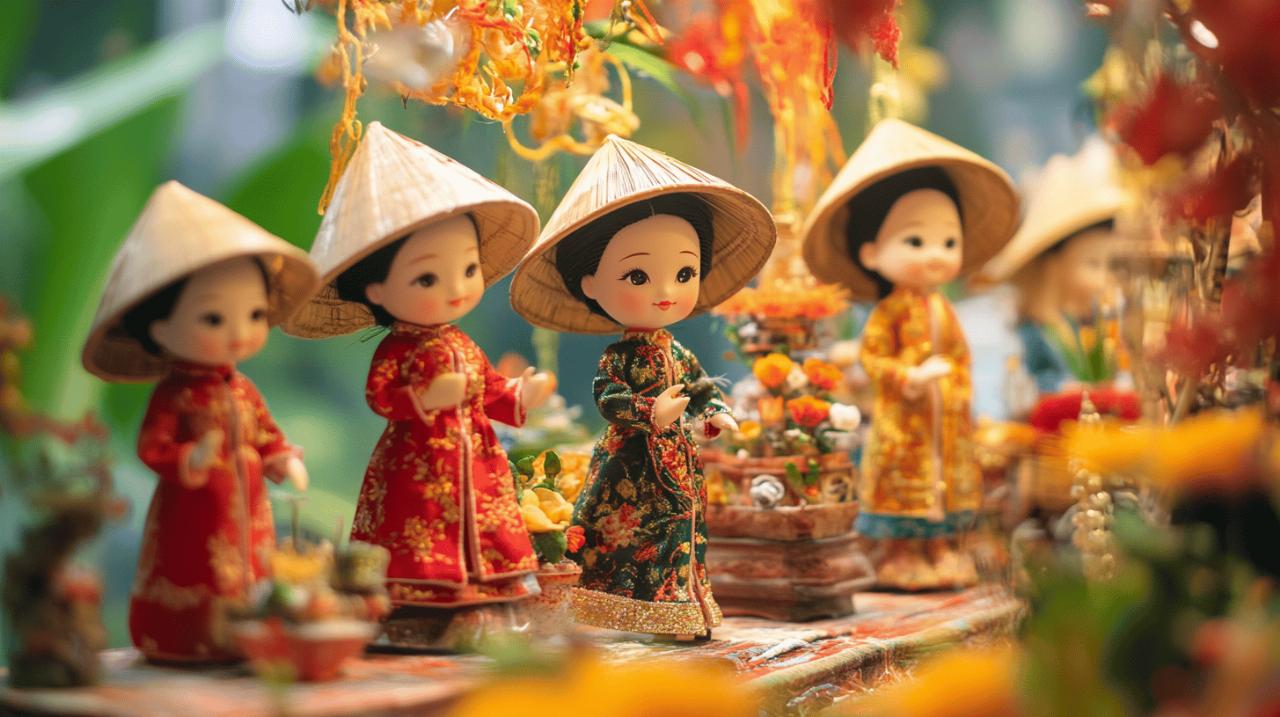Hanoi, the captivating capital of Vietnam, boasts a rich tapestry of cultural celebrations that unfold throughout the year. These festivals offer visitors a unique glimpse into the soul of Vietnamese traditions, history, and community spirit. For those seeking an unconventional way to experience and document these vibrant events, a growing trend has emerged that combines travel photography with charming companions – Travelling Dolls that accompany their owners on cultural adventures, creating distinctive visual memories and unexpected connections.
The enchanting world of hanoi's traditional festivals
The ancient city of Hanoi presents a calendar brimming with cultural festivities that showcase the harmonious blend of Chinese, Southeast Asian, and French influences that have shaped this capital over centuries. From the jubilant atmosphere of Tet Nguyen Dan (Vietnamese New Year) celebrated in January to the spiritual ceremonies of the Perfume Pagoda Festival beginning in February, Hanoi transforms throughout the seasons with rituals that have been preserved for generations. Travelling Dolls have become unique companions for those documenting these celebrations, offering a fresh perspective on these time-honoured events.
Seasonal celebrations through a doll's eyes
When spring arrives in Hanoi, the city erupts in festivities starting with Tet, the most significant celebration in Vietnamese culture. Streets become adorned with vibrant decorations as families gather to welcome prosperity for the coming year. Photographers carrying specially dressed dolls capture these moments from a distinctive vantage point, with their miniature companions posed against backgrounds of blooming peach blossoms and ceremonial offerings. The Lim Festival in February presents another remarkable opportunity, with traditional Quan Ho folk songs echoing through the air while dolls dressed in miniature versions of the traditional Ao Dai garments create striking visual narratives.
As seasons progress, autumn brings the ethereal Mid-Autumn Festival, when Hanoi glows with lantern displays and moon-viewing celebrations. The Full Moon celebrations offer exceptional photography moments, especially in the historic Old Quarter where narrow streets become illuminated with warm, golden light. During these events, dolls positioned among moon cakes and star-shaped lanterns create enchanting images that tell the story of Vietnamese traditions from an unexpected perspective.
Capturing festival magic with miniature companions
The art of photographing Hanoi festivals with travelling dolls requires both creativity and cultural sensitivity. Many enthusiasts craft custom outfits for their dolls that reflect the specific festival being documented. During Buddha's Birthday celebrations in April, dolls might wear miniature versions of traditional Buddhist prayer garments, while for Independence Day commemorations in September, they might don patriotic attire reflecting Vietnamese national pride. These thoughtful details not only create more authentic images but demonstrate respect for the cultural significance of each event.
The Imperial Citadel of Thang Long, standing 40 meters tall and recognized as a UNESCO World Heritage site, serves as a magnificent backdrop for festival photography throughout the year. Here, dolls positioned against the ancient architecture create a striking contrast between the tiny figures and the grandeur of Vietnamese history. Similarly, at Hoan Kiem Lake (Turtle Lake), dolls photographed along the shores during festival times capture both the natural beauty and cultural significance of this beloved landmark.
Travelling dolls: unique witnesses to hanoi's cultural heritage
Beyond being mere photography props, these dolls have evolved into cultural ambassadors, creating unexpected bridges between visitors and locals. Many travellers report that their dolls become conversation starters, particularly during festival times when curious locals approach to inquire about the dolls and share information about the celebrations. This phenomenon has transformed what might otherwise be standard tourism into meaningful cultural exchange, with dolls serving as unexpected intermediaries.
The trend connects interestingly with Vietnamese traditions, as dolls have their own significance in local culture. Traditional Vietnamese dolls, often representing characters from folklore or wearing regional costumes, are themselves cherished souvenirs. The intersection between these indigenous dolls and the travelling companions from abroad creates fascinating cultural dialogue. Some photographers even collect local dolls to join their travelling companions, creating visual stories that blend multiple cultural perspectives.
Creating meaningful memories with doll photography
The practice of documenting Hanoi festivals through travelling dolls transcends mere photography; it becomes a creative exercise in storytelling. Many enthusiasts maintain dedicated social media accounts or blogs chronicling their dolls' adventures through Vietnam's cultural landscape. These visual narratives often feature dolls witnessing traditional water puppet performances, sampling Vietnamese street food during festival markets, or observing religious ceremonies at Buddhist temples like the 15th-century Perfume Pagoda.
The approach offers a fresh perspective on cultural documentation, somewhere between traditional travel photography and artistic expression. By positioning dolls within festival settings, photographers can capture the scale, colours, and atmosphere of events while adding an element of whimsy that makes these cultural experiences more accessible to global audiences. The images often convey the joyful spirit of celebrations like the Wandering Souls Day or the solemnity of Reunification Day commemorations in ways that conventional photography might not achieve.
Connecting with locals through shared doll adventures
Perhaps most remarkably, travelling dolls have facilitated genuine connections between visitors and Hanoi residents during festival times. Local artisans, particularly those from traditional villages surrounding Hanoi such as Bat Trang (famous for ceramics) or Van Phuc (renowned for silk production), have embraced this trend. Some craftspeople now create miniature festival items specifically for travelling dolls, from tiny ceramic vessels to scaled-down silk garments that reflect Vietnamese artistic traditions.
These interactions extend beyond commerce into cultural sharing. During the Hoi An Lantern Festival, celebrated monthly with the full moon, doll photographers often join local families in releasing floating lanterns on the water. Vietnamese children sometimes bring their own dolls to these events, creating spontaneous international doll gatherings that transcend language barriers. Through these shared experiences, travelling dolls become vehicles for cultural understanding, particularly during festivals when communities are most open to celebrating their heritage with visitors.
As this unique approach to experiencing Hanoi's festival culture continues to grow in popularity, it represents a thoughtful way to engage with Vietnamese traditions while creating distinctive visual memories. Far from being a trivial tourist activity, travelling doll photography has evolved into a respectful method of cultural documentation that brings joy to both visitors and locals alike, proving that sometimes the smallest companions can help us connect with the grandest cultural experiences.

